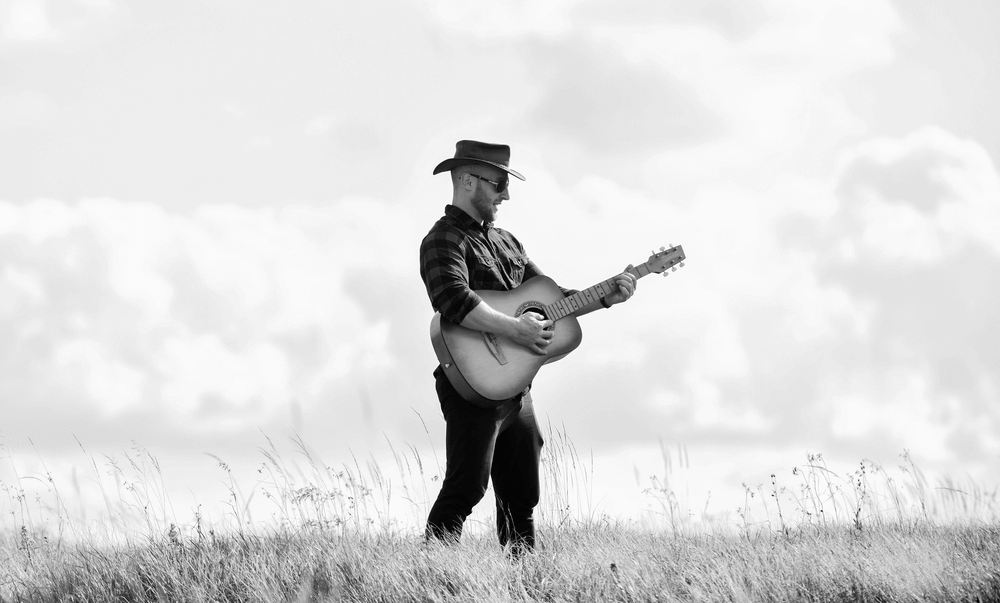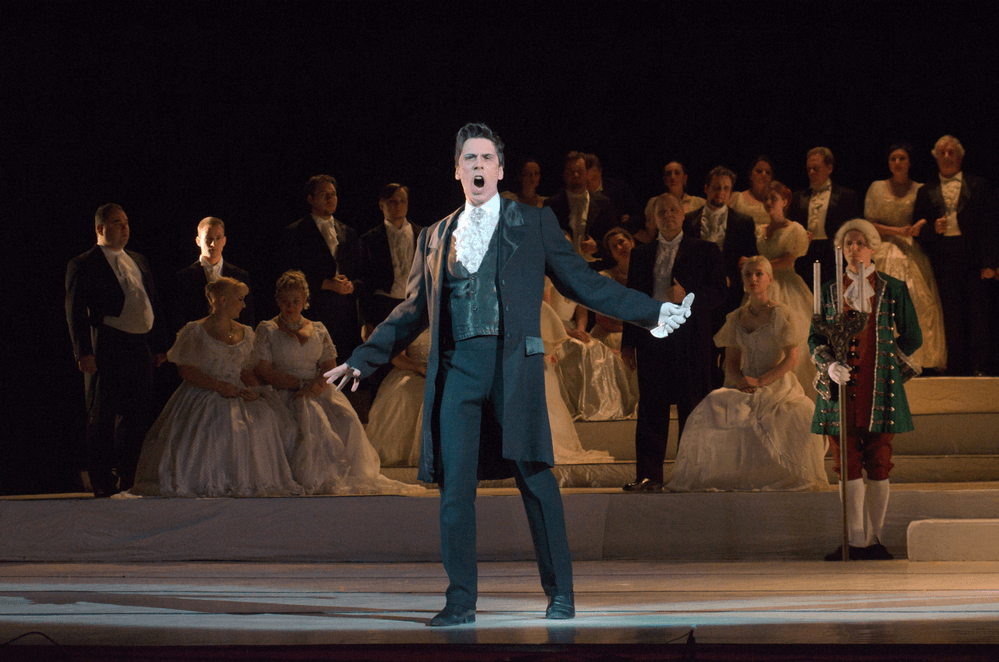The concepts of vocal ranges are crucial for singers to fully comprehend their voices. This knowledge will help them appreciate their unique abilities, enabling them to explore a diverse and extensive repertoire that suits their talents and aspirations.
Baritones, possessing a naturally rich and warm tonal quality, have the remarkable capability to convey an exceptionally broad spectrum of emotions and musical expressions. This encompasses everything from the profound and resonant depths of the bass-baritone to the remarkably nimble and lyrically expressive qualities inherent to the lyric baritone. The dramatic phrases particular to the baritone range, in all its nuanced diversity, stand as a veritable treasure trove of artistic potential, offering an extensive and versatile palette for singers coming from a multitude of musical genres to explore, experiment, and excel.
In other words, baritones get the best of both worlds.
The repertoire of baritones is as varied as the subcategories. They are featured in various musical genres including opera, classical, jazz, musical theater, and contemporary music. It’s because of their ability to portray a wide range of emotions that baritones are cast in such a wide field of rolesThe baritone voice type category holds many popular singers from the past such as Frank Sinatra and Nat King Cole, as well as contemporary baritones such as Michael Buble, and Hozier. Famous operatic baritones include Gerald Finley, Friedrich Schorr, Placido Domingo, and Sherrill Milnes, as well as many others, some of which we will dive a little deeper into throughout this article.

Understanding the Bass-Baritone Range
Famous roles operatic that bass-baritones sing Escamillo from George Bizet’s Carmen, Porgy from George Gershwin’s Porgy and Bess, and Wotan from Wagner’s The Ring of the Nibelung (Der Ring des Nibelungen). Of course, we couldn’t get by without mentioning at least one Wagner piece since he’s really the one who stretched the bass voice type and the baritone voice type into something that suited his needs.
Bass-baritones didn’t truly exist until Wagner started requiring a consistent high part for bass singers. Bass-baritone singers can be seen as either low baritones or high basses. The qualities of their voice tend to align more with baritones while being able to reach much lower depths. The bass-baritone loses some of the power and resonance in the lowest part of his range, but it’s made up for by the light, baritone, color, and agility that is highly prized.
Many bass-baritone voices have become world-renowned and beloved by listeners anywhere. Samuel Ramey has commanded roles impressively for more than three decades. Bryn Terfel is perhaps the most famous Welsh singer in the world. Bryn has made history as a brilliant bass-baritone, even performing at the coronation of Charles III.
As you can see, bass-baritones, though sometimes referred to as high basses or low baritones, are distinct in their own way. They are powerful and full of rich resonance. The roles they play in opera, choral music modern music, and musical theater are critical and moving possessing the crowd with a sort of awe.

Exploring the Lyric Baritone Voice
Lyric Baritones, as the name implies, have sweet, mild-sounding baritone voices. They lack the harshness that we typically associate with baritones. Their range (A2 to G4) falls almost exactly inside the typical baritone range (G2-G4).
Lyric baritones can often be found playing comic roles in opera as well as lead roles. This is due to their vocal agility and light tone that can imply innocence or mischief in turn.
Some popular roles include Count Almaviva from Mozart’s The Marriage of Figaro, Don Giovanni from Mozart’s Don Giovanni, Figaro from Rossini’s The Barber of Seville, and Morales from Bizet’s Carmen.
As you can see, this type of male voice has so much versatility and expressive capabilities. They’re characterized by smooth, melodious qualities that strike the perfect balance between richness and agility while maintaining a warm, inviting timbre. Lyric baritones have an uncanny ability to convey emotion through both lyric phrasing and nuanced interpretation that are necessary when approaching classical music.
Thomas Hampson is a well-recognized, incredibly innovative lyric baritone of our time. He has received numerous honors for his artistry and leadership in the music world. He has performed more than 80 roles in operatic music! A few of Hampson’s roles include Don Alfonso in Mozart’s Così fan tutte, Jan Vermeer in the world premiere of Stefan Wirth’s Girl with a Pearl Earring, and the title role of Rufus Wainwright’s Hadrian,
Dmitri Hvorostovsky, another one of the greats, passed away too young at the age of 55. During his career, he became one of the world’s most extraordinary operatic performers. Hvorostovsky performed Prince Yeletsky in Tchaikovsky’s Queen of Spades, a role that showcased his perfected sound and astounding breath control, Germont in La Traviata, Andrei in War and Peace, Rodrigo in Don Carlo, Count Anckarström in Un Ballo in Maschera, Count di Luna in Il Trovatore, and the title roles of Don Giovanni, Rigoletto, and Eugene Onegin, as well as many others!

Find A Music Agent in the Music Business
Dramatic baritones generally have darker, larger voices capable of supporting lower notes than their lyric buddies. They are recognized for their ability to command a role with powerful vocal capabilities. Dramatic baritones possess a rich timbre that allows them to deliver complex melodies with remarkable strength.
Dramatic baritones are a distinctive and commanding voice type within the world of opera and classical music. Renowned for their vocal power and resonance, they occupy a unique niche between the deep bass-baritones and the more lyrical voices of the baritone spectrum. There is a celebration reserved for the intense emotions and complex, often heroic characters that are reserved for the dramatic baritones to portray on the operatic stage.
In fact, that’s one of the ways a dramatic baritone is so easily recognizable. Their capacity to deliver impassioned performances that move the audience is incredible. Their vocal range tackles the highs and lows with enough versatility to take on a wide range of characters. Dramatic baritones excel in emotionally challenging roles such as Verdi’s Rigoletto or Macbeth. They way their voices captivate the audience with authority adds a layer of intensity to the storytelling that makes the experience of hearing them impossible to forget.

The dramatic baritone category corresponds roughly to the Heldenbariton in the German voice type system, except that some Verdi baritone roles are not included. It is important to note that Verdi baritones are sometimes seen as dramatic baritones that have less difficulty in the upper register. Because the Verdi baritone is sometimes seen as a subcategory of the dramatic baritone, some singers can pick and perform roles from both sets of repertoire.
Titta Ruffo, whose real name was Ruffo Cafiero Titta, was a dramatic baritone voice to be reckoned with. He was considered the only male singer who could rival the world-famous tenor, Enrico Caruso of the early 20th century. Ruffo was self-taught, and, unfortunately, his astounding voice was burned out by the time he was 50 years old. However, his lack of formal training didn’t stop him from playing lead roles such as Rigoletto, Barnaba, Carlos, and Rigoletto in the prime years of his career.
Falk Struckmann is another lead baritone who is not to be overlooked. He has a vast repertoire, including great Wagnerian roles such as Dutchman from The Flying Dutchman, King Henry from Lohengrin, King Marke from Tristan and Isolde, and Hans Sach from The Master Singers of Nuremberg. There is so much else that Struckmann has performed and excelled at that it would take far too long to list them all. He has performed on the greatest European and American stages as well as worked with conductors of high acclaim.

Vocal Range of the Baritone Voice
A baritone is the most common male voice type. It may be common, but it’s not ordinary. As a matter of fact, the baritone voice has much weight and power that gives a distinctly strong sound.
The tricky thing about baritones is that their voice type isn’t ever covered in choir settings. Baritons either sit in with the tenors and struggle with the highest notes or sit with the basses and struggle with the lowest notes. There isn’t a call for “baritone” in a four-part harmony. If you are a baritone, choose a section, but don’t try to force the extremes of your range. Just do what you can and let the rest of the section help you out.
There are many good exercises out there that focus on different things and shine a light on different strengths and weaknesses. Here are just a few exercises you can do to keep your voice healthy and help your baritone range thrive in any setting:
A good rule of thumb is that short-distance scales tend to build tone, strength, and control, while wider or longer scales tend to extend the range. Some singing exercises that can be used to extend your range include lip trills, fire engine sirens, tongue trills, working with vocal fry, and making sure your jaw and neck muscles are relaxed.
For lip trills – also called lip buzz or lip rolls – vibrate your lips by blowing air through them while making a humming sound. Gradually increase the range as your warm-up progresses, and increase and duration of the trill, as well.
Sirens glide smoothly up and down your range while maintaining a consistent tone. Any breaks in your voice should be smoothed out as your warm-up continues. Always avoid strain and tension. Since a piano is not needed for this exercise, you can do it at any time.
Many famous opera singers are baritone and beloved for their delightful pairing of dark tones and striking agility. Matthias Goerne, for example, was a member of Dresden Opera and has played a memorable Wozzeck. He is mainly revered for his peerless Lieder singing. He was a pupil of the great Dietrich Fischer-Dieskau, he has a uniquely rich voice that brought uncharted depth to Schwanegesang and Winterreise. It’s been said that few male singers had such a rich palette of colors as Goerne.
Roderick Williams is another incredibly well-known baritone who took the world by storm. He is an English composer as well as a singer and is known for his sophisticated voice and intelligent interpretations.
There are several subcategories of baritone that we didn’t talk about in the article, such as the noble baritone or the Baryton-Martin baritone, that explore different colors and slightly different ranges of the baritone voice. In opera, baritones often play the roles of generals and noblemen such as the title roles of Don Giovanni, Rigoletto, and Nabucco.

Conclusion
The concept of vocal range isn’t something to set aside for later. Understanding it enables singers to explore and expand their repertoire to include entire worlds they might have otherwise been missing. It helps with the singer’s goals, allowing them to find specific ways to better their voice and specific songs to sing that bring out their best. Knowing and understanding your vocal range is important to truly embracing your voice. The baritone range is its own world of artistic potential, offering a vast diversity of palette, range, performance, and style.
Each baritone voice type has unique strengths and capabilities that allow them to explore diverse repertoire and roles. These roles are designed to allow baritones to showcase their range and versatility. It is crucial to have professional guidance, such as vocal coaching or lessons, to develop and define your baritone voice. Especially since this voice type isn’t addressed in choral settings, one-on-one teaching is essential to protecting and refining your voice.
No one voice type, baritone, bass, soprano, tenor, and so on, is more important than the other, or more unique. The musical world is made up of every kind of voice and all the little differences that make humans individual from one another and music worth traversing. The way all voices work together is a testament to humanity’s ability to work together and create something beautiful despite our differences.





